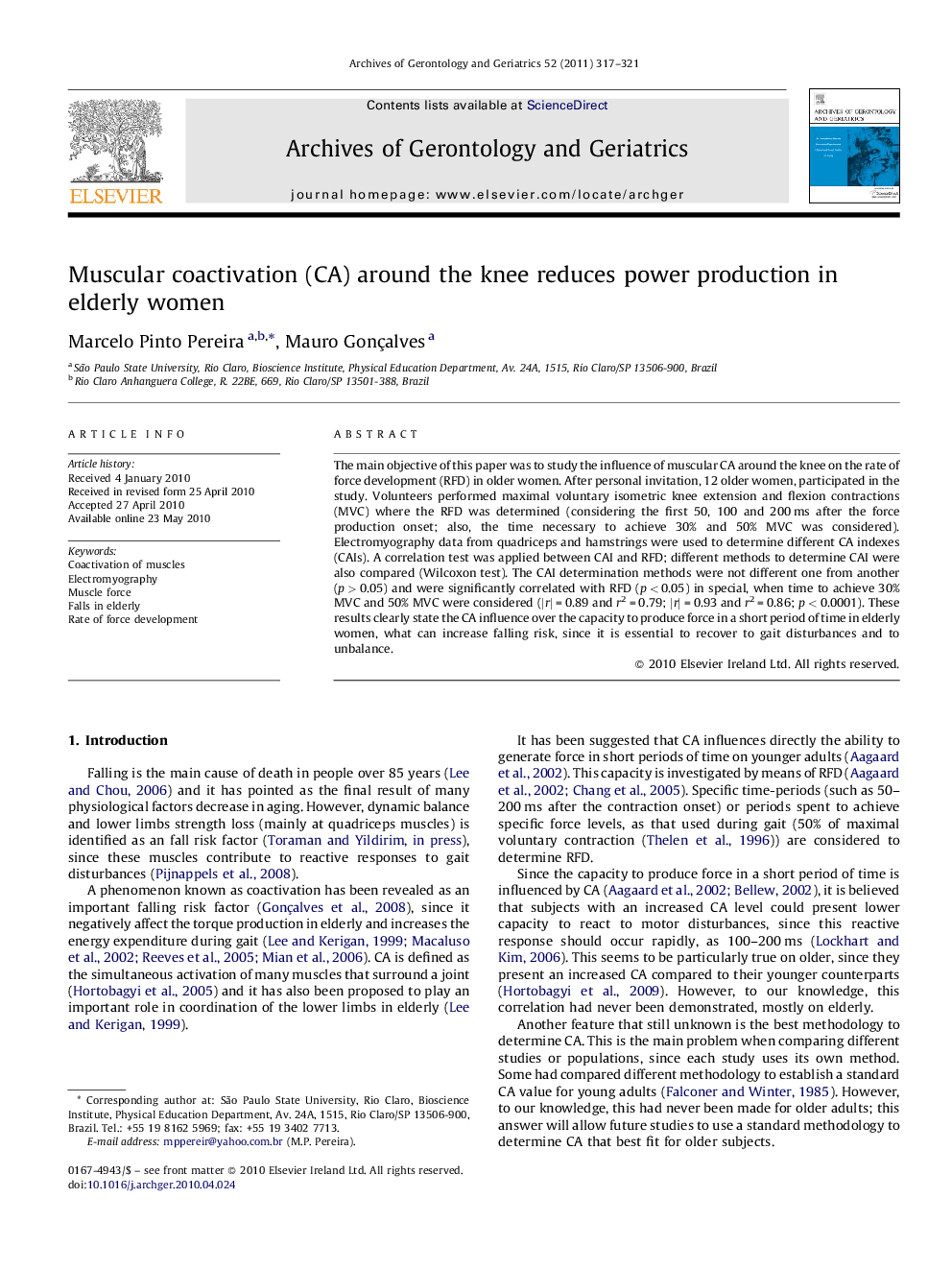| Article ID | Journal | Published Year | Pages | File Type |
|---|---|---|---|---|
| 1903548 | Archives of Gerontology and Geriatrics | 2011 | 5 Pages |
The main objective of this paper was to study the influence of muscular CA around the knee on the rate of force development (RFD) in older women. After personal invitation, 12 older women, participated in the study. Volunteers performed maximal voluntary isometric knee extension and flexion contractions (MVC) where the RFD was determined (considering the first 50, 100 and 200 ms after the force production onset; also, the time necessary to achieve 30% and 50% MVC was considered). Electromyography data from quadriceps and hamstrings were used to determine different CA indexes (CAIs). A correlation test was applied between CAI and RFD; different methods to determine CAI were also compared (Wilcoxon test). The CAI determination methods were not different one from another (p > 0.05) and were significantly correlated with RFD (p < 0.05) in special, when time to achieve 30% MVC and 50% MVC were considered (|r| = 0.89 and r2 = 0.79; |r| = 0.93 and r2 = 0.86; p < 0.0001). These results clearly state the CA influence over the capacity to produce force in a short period of time in elderly women, what can increase falling risk, since it is essential to recover to gait disturbances and to unbalance.
